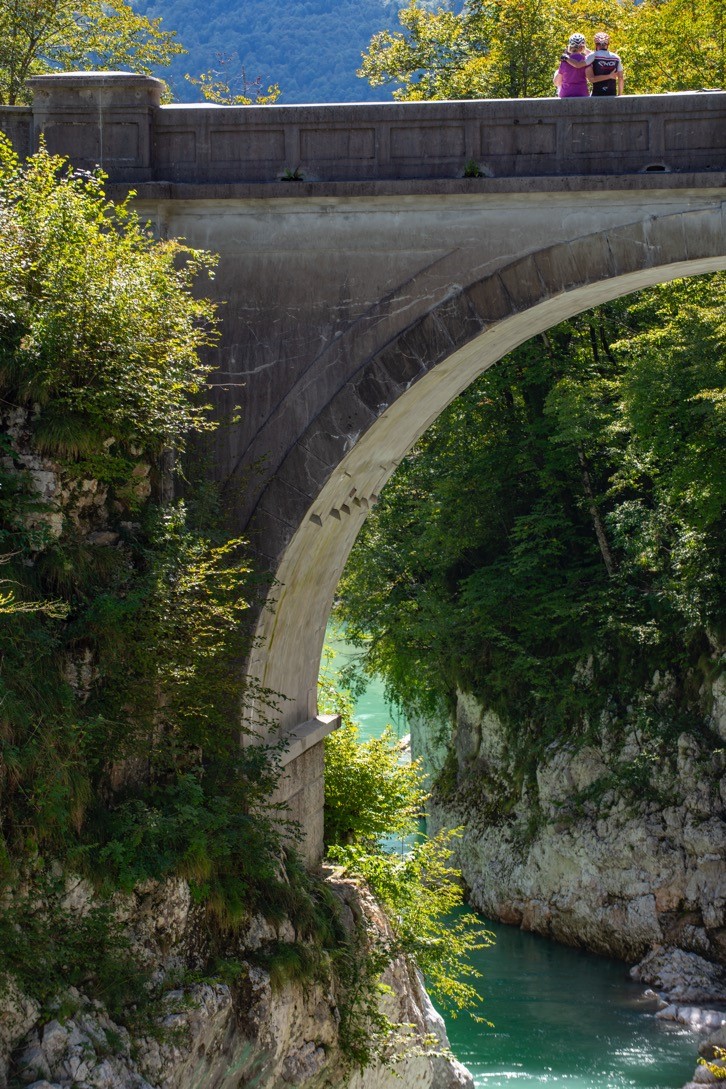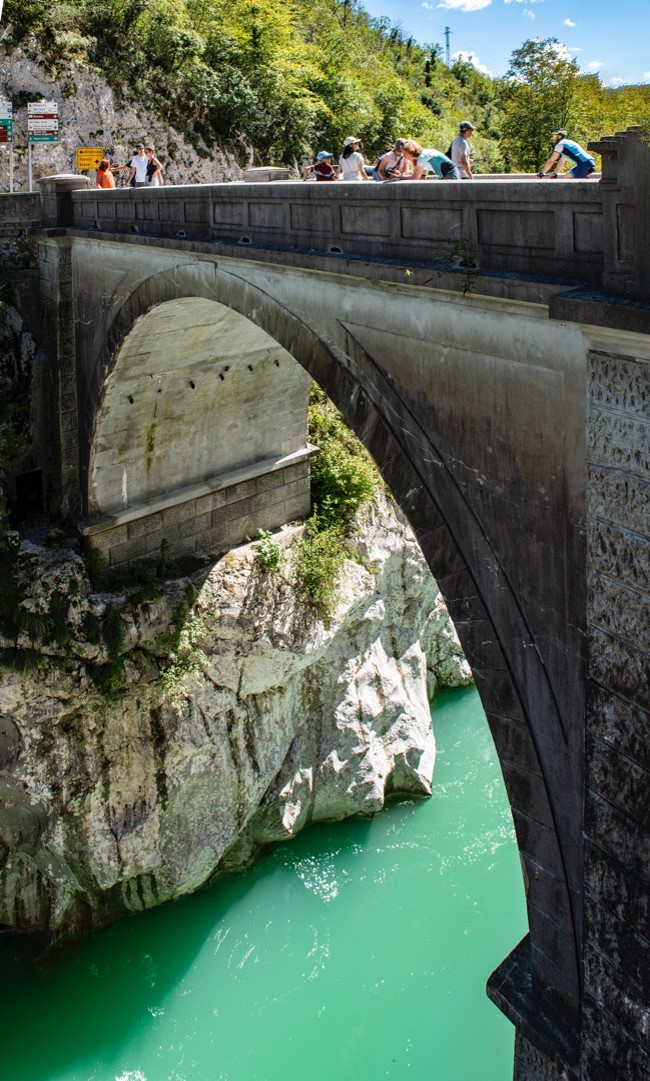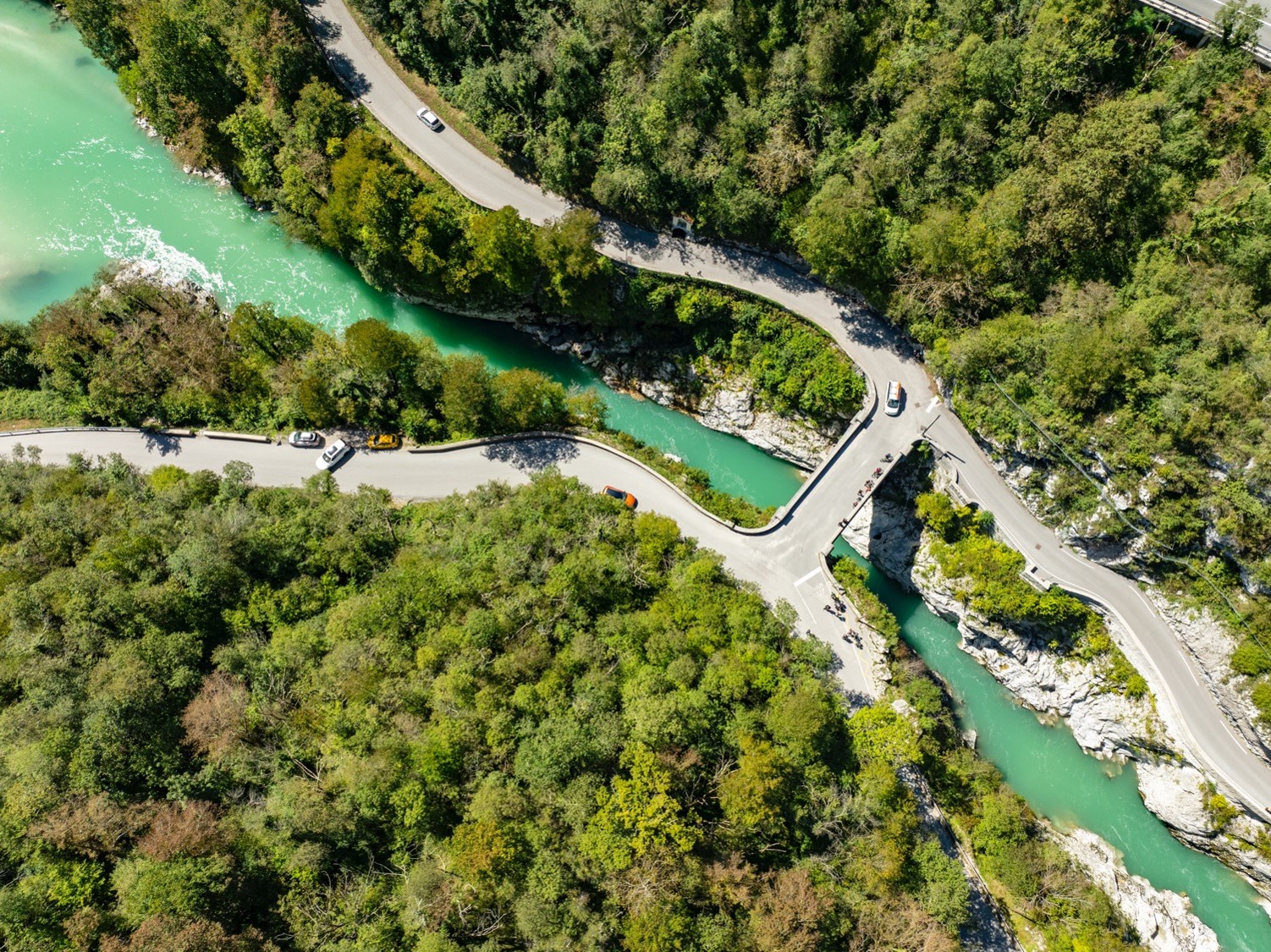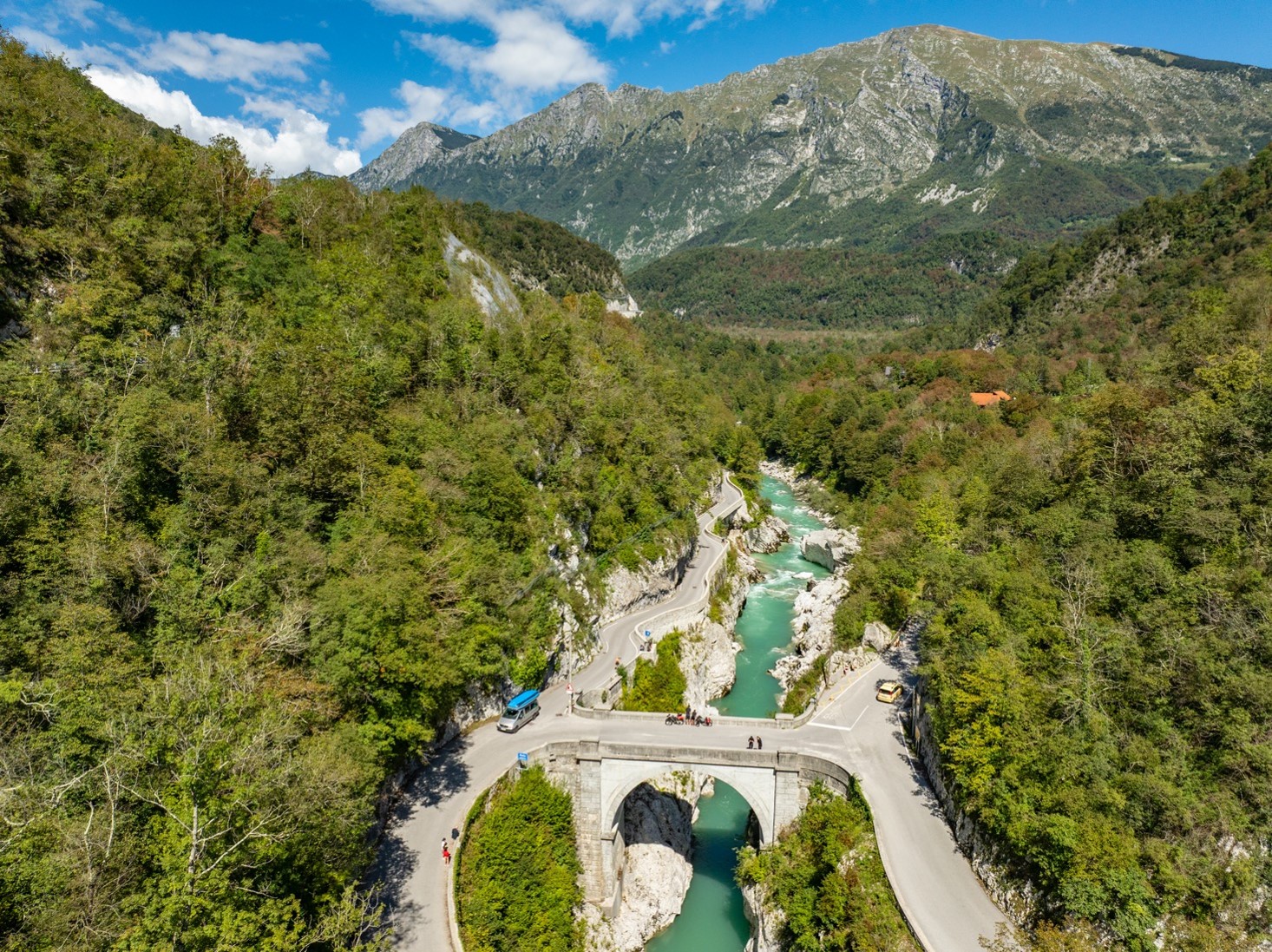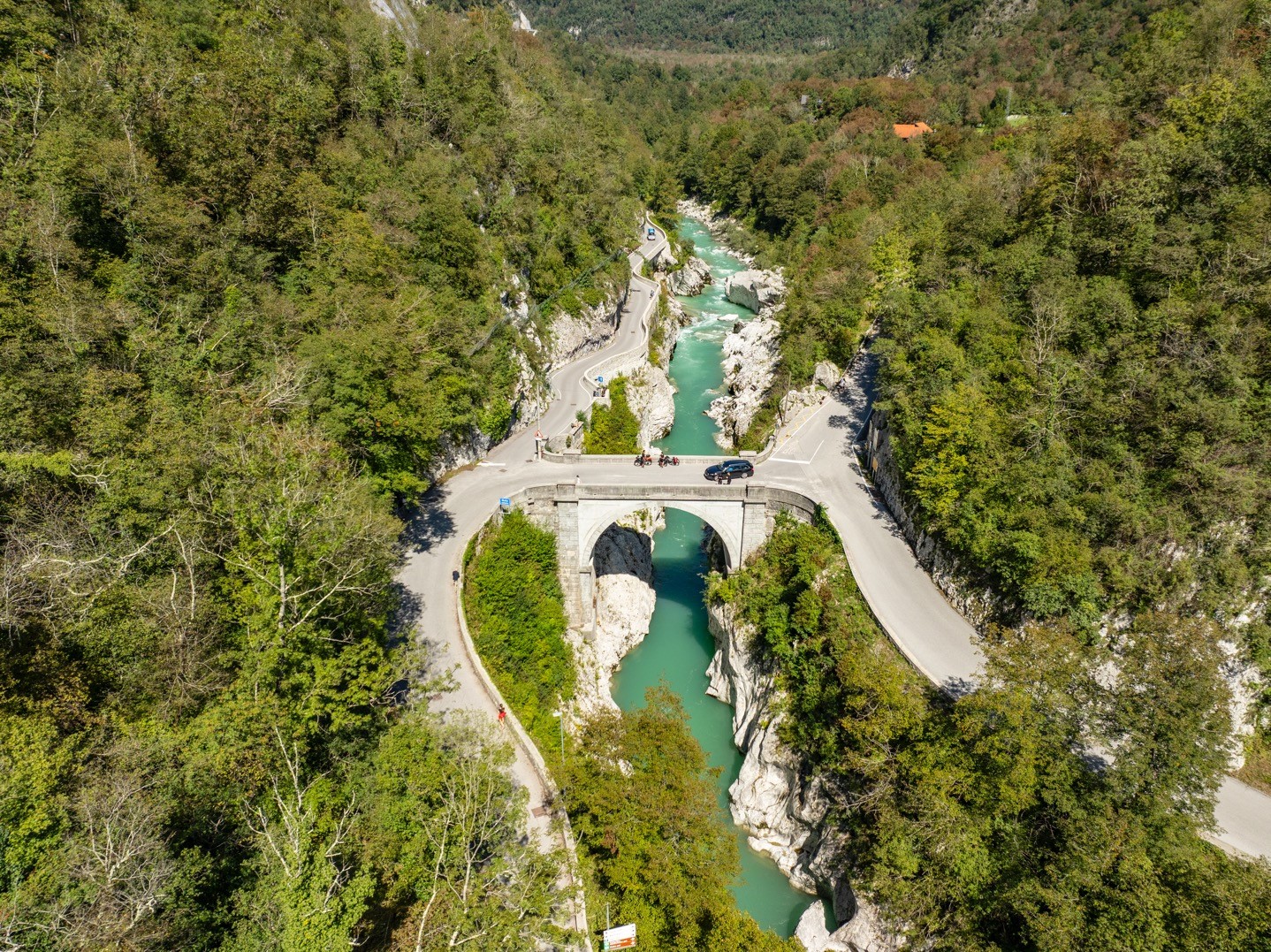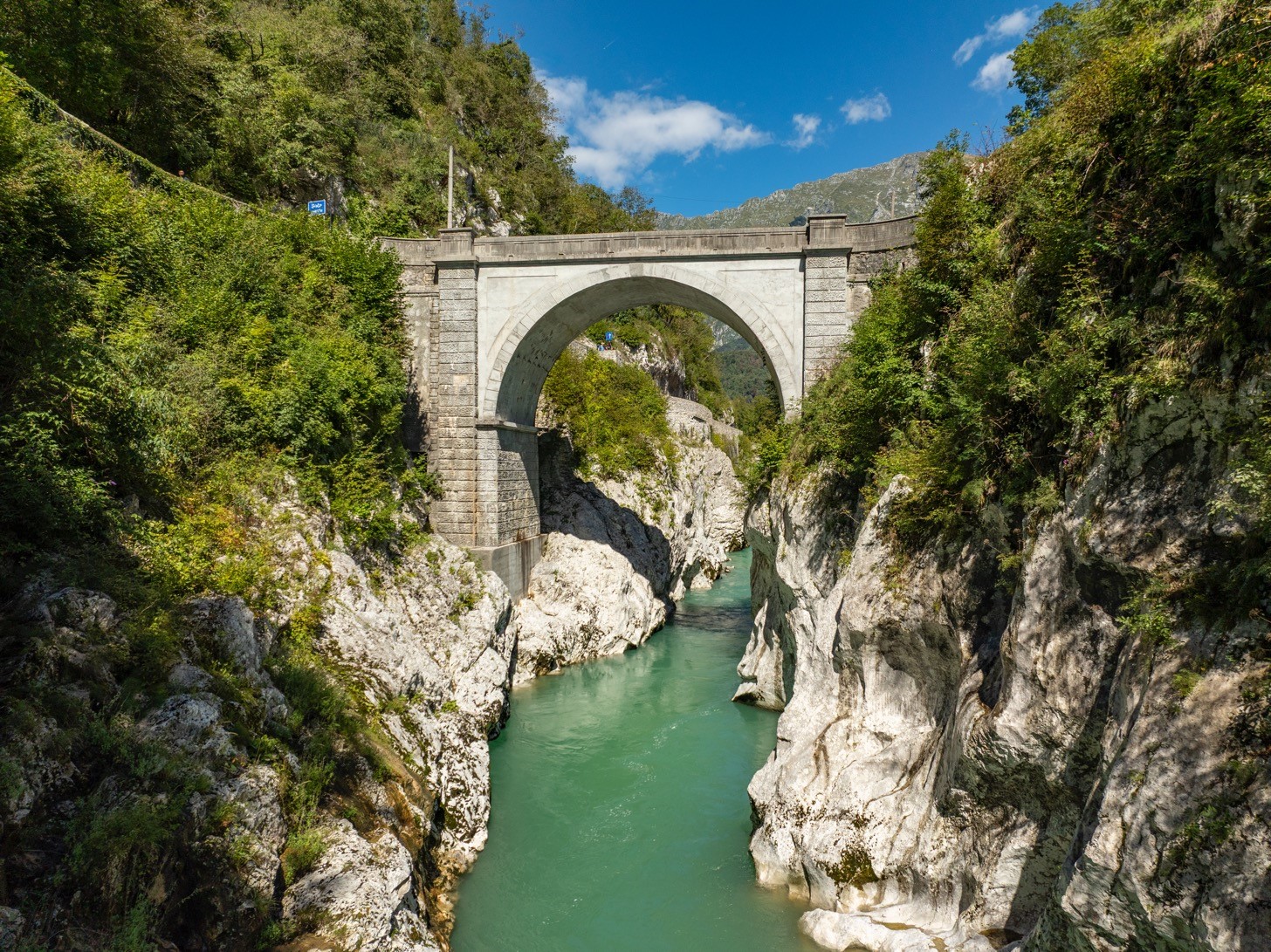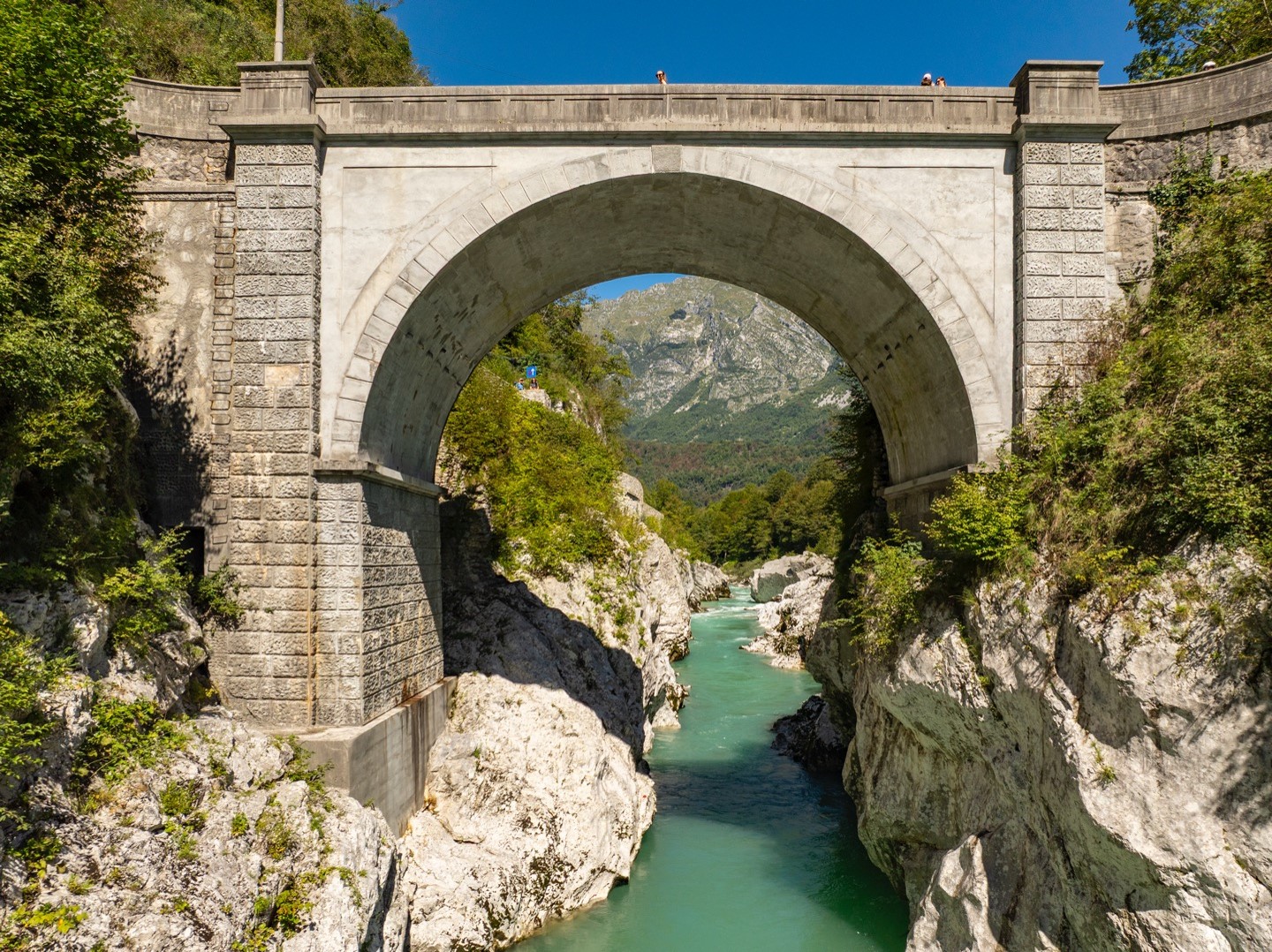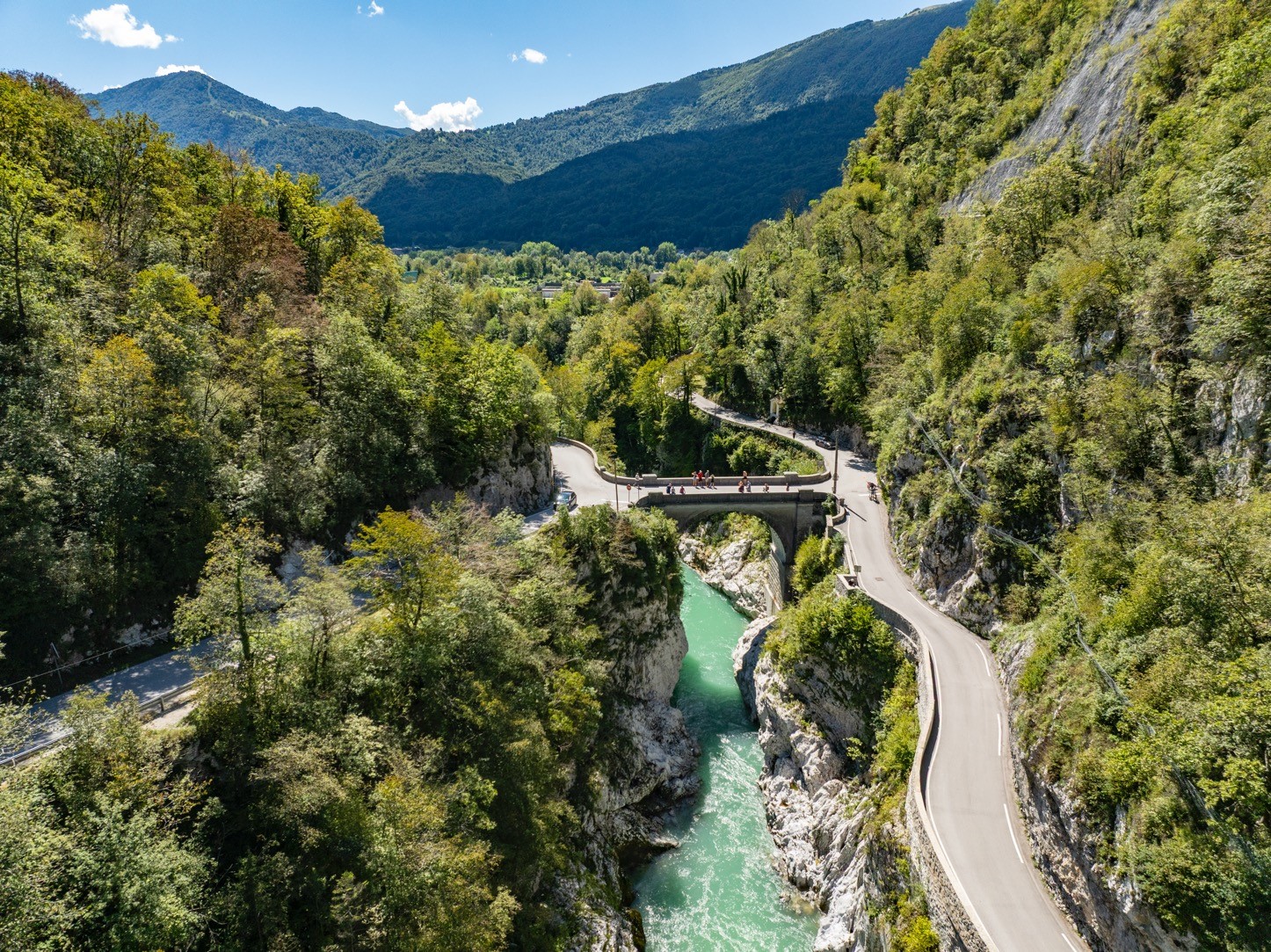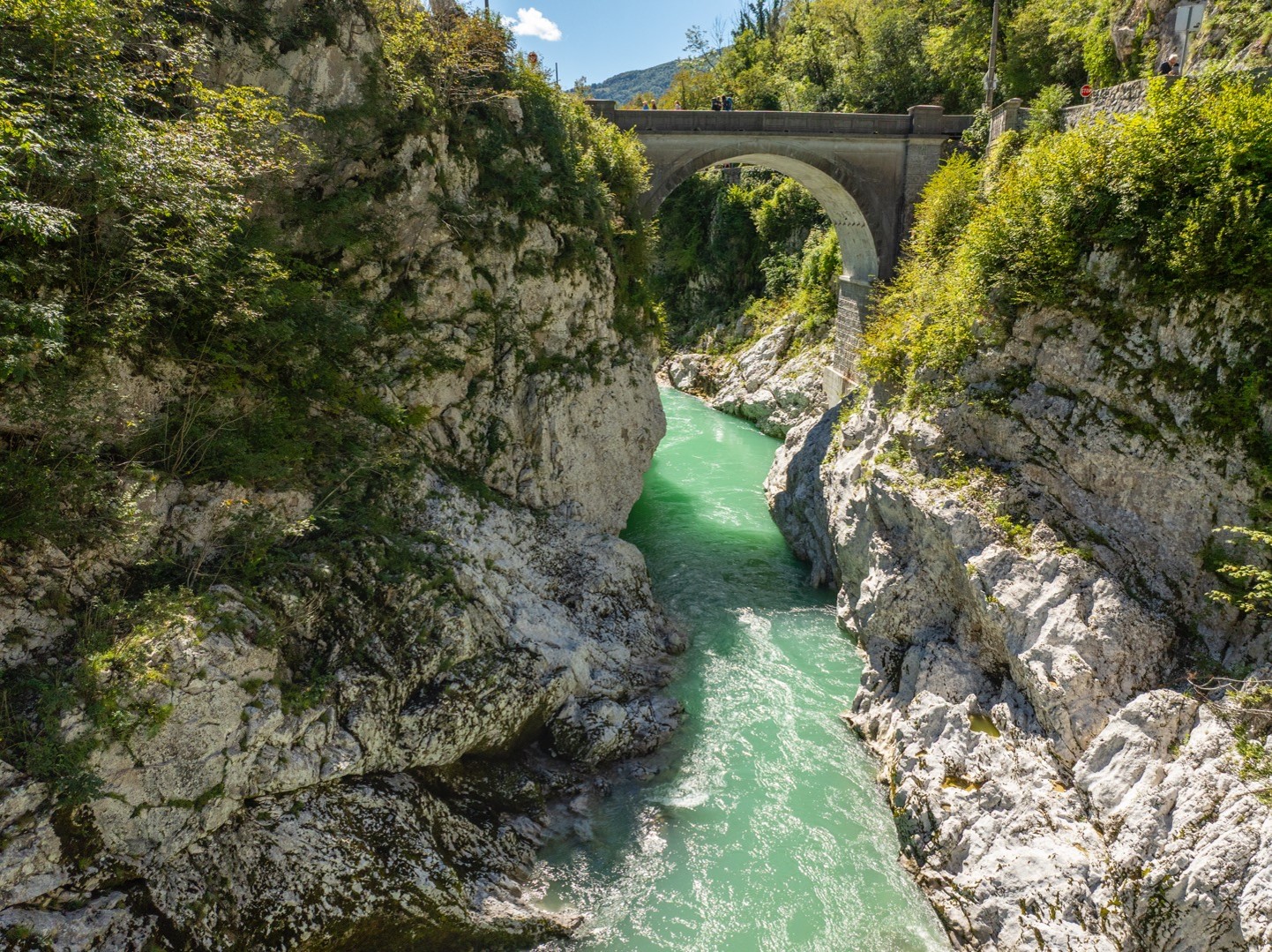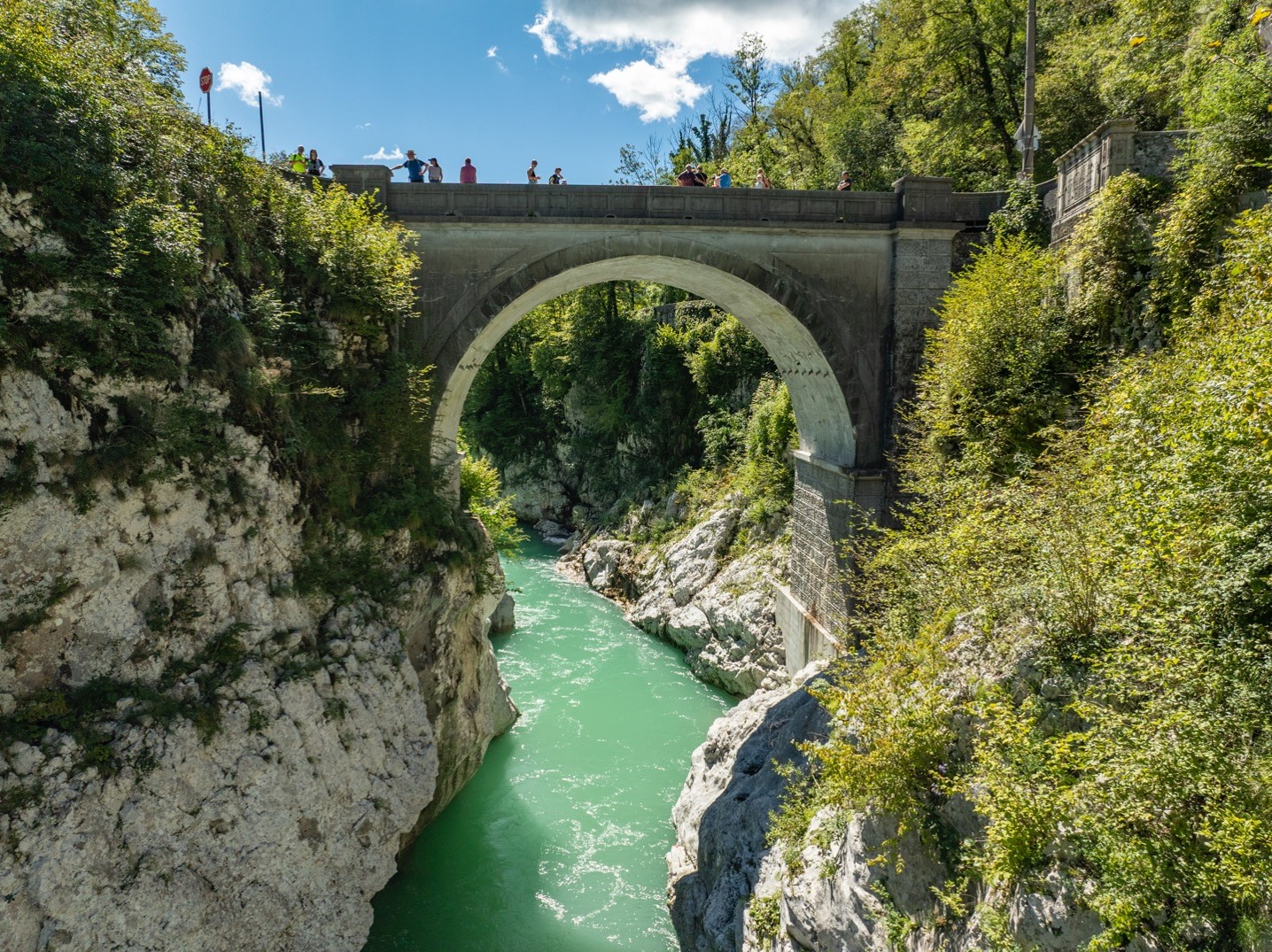kobarid

Napoleon Bridge
Gorazd HUMAR
HISTORY
A TARGET OF ATTACKS ACROSS THE AGES
Western Slovenia features many bridges known as Napoleon bridges. However, this name doesn’t necessarily indicate construction by Napoleon or the French during their three occupations of Slovenian territory (1797-1813). Rather, these bridges likely earned their names because the French armies used them or because they were built or renovated during French rule—particularly during the Illyrian Provinces period (1809-1813). The rich history of these bridges lives on primarily through cherished collective memory and folk traditions.The Napoleon Bridge near Kobarid (Caporetto) is the only bridge that bears the French emperor’s name, spanning the Soča-Isonzo River. While serving as a vital link between Kobarid, Drežnica, and Smast, this bridge developed independently from the established trade routes that connected Carinthia, the Predil Pass, and the Soča-Isonzo Valley to Gorizia and Trieste. Records show that in 1616, during wartime, the Venetians dismantled the wooden bridge they themselves had built. Soon after, a new wooden bridge was erected in its place. Historian Simon Rutar reports that in 1758, the bridge collapsed and that two years later, in 1760, it was rebuilt thanks to the contribution of local residents and nearby churches.
Military maps of the Habsburg army—known as the Josephine military maps (1763–1787)—document a wooden bridge over the Soča-Isonzo that connected Kobarid to Drežnica (Caporetto to Dresenza). The map’s accompanying description states:
Otherwise, the aforementioned river is crossed by a very poor wooden bridge near the village of Caporetto, which represents the only way to cross it. Unfortunately, no drawings of this bridge survive from that period.
In March 1797, Napoleon led his army through the Soča-Isonzo Valley, advancing past Kobarid toward Austria. Though he likely never crossed this particular bridge, locals called it the “Napoleon Bridge” after the French forces departed.
The fate of the old Napoleon bridge in Kobarid, like many other bridges along the Soča-Isonzo River, was sealed on 24 May 1915. On that day, the Italian army’s invasion of Caporetto marked the beginning of the bloody Isonzo Front. As the Austro-Hungarian army retreated, they destroyed the bridge and withdrew to the left bank of the river. The Italian army initially crossed using a temporary wooden structure, which they later replaced with an iron one. In 1924, following World War I and during the Italian occupation, the bridge was restored to its present form. The structure later proved vital during the defence of Caporetto in September 1943, amid the partisan liberation that established the Kobarid Republic (Kobariška Republika).
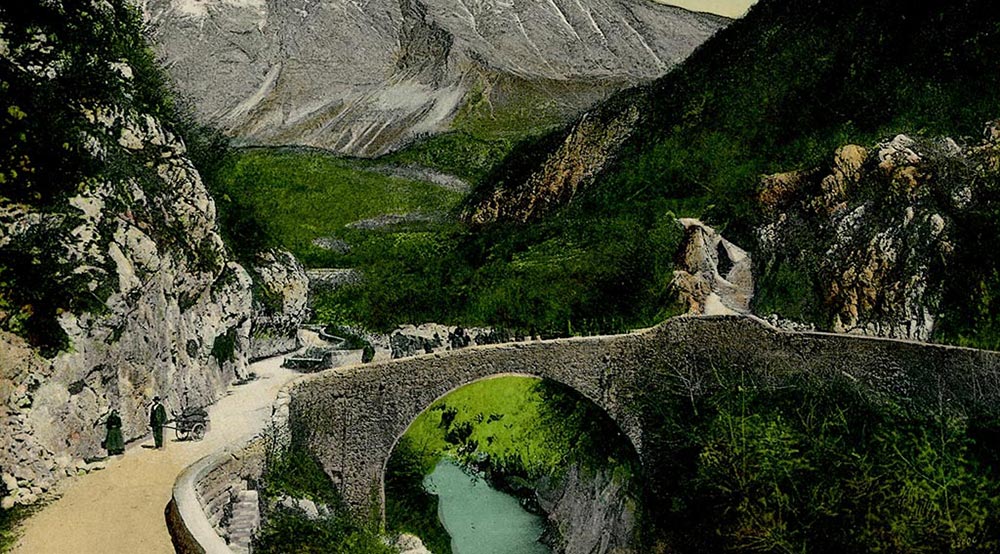
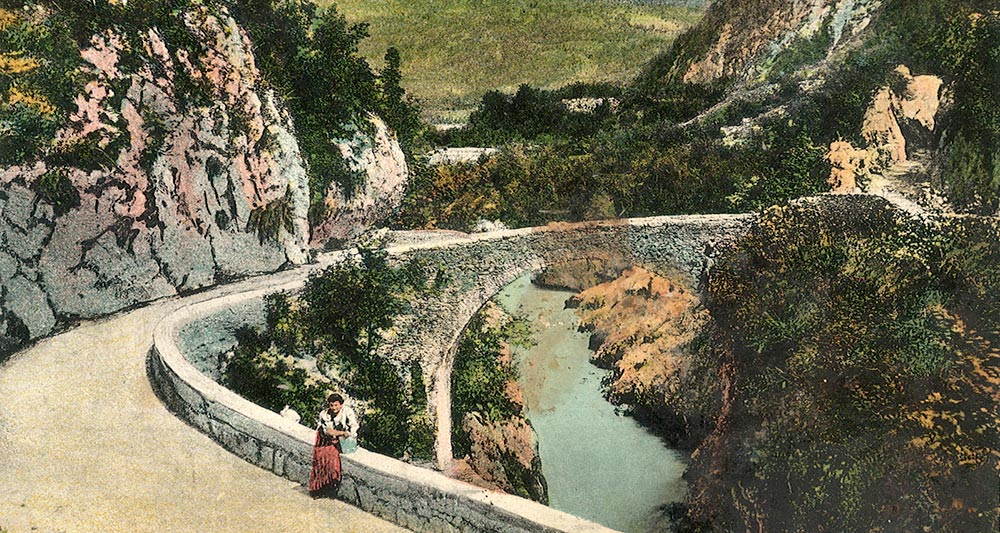
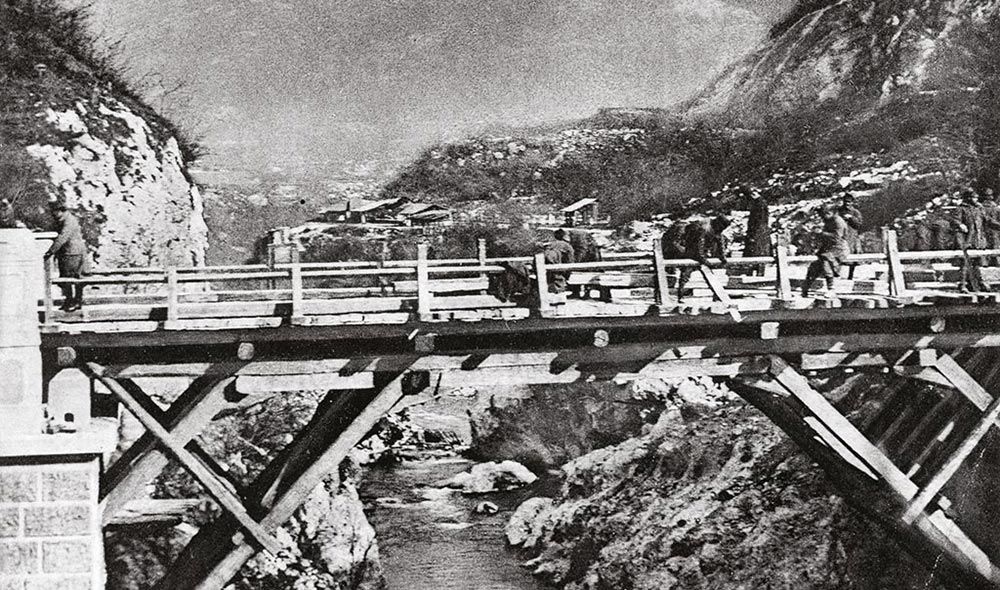
THE BRIDGE IS ONE OF KOBARID’S LANDMARKS
The bridge features a single arch with a span of approximately 20 metres and a width of 8 metres. The semi-circular structure rests on vertical supports anchored to solid rock.The bridge’s majesty is heightened by the deep gorge of the Soča-Isonzo River below, where emerald waters draw canoeists and adventure seekers. Each year, locals organise bridge-jumping events that attract growing numbers of visitors to Kobarid. A bustling campsite, particularly lively during the summer months, lies nearby.

Photo by: Željko Cimprič
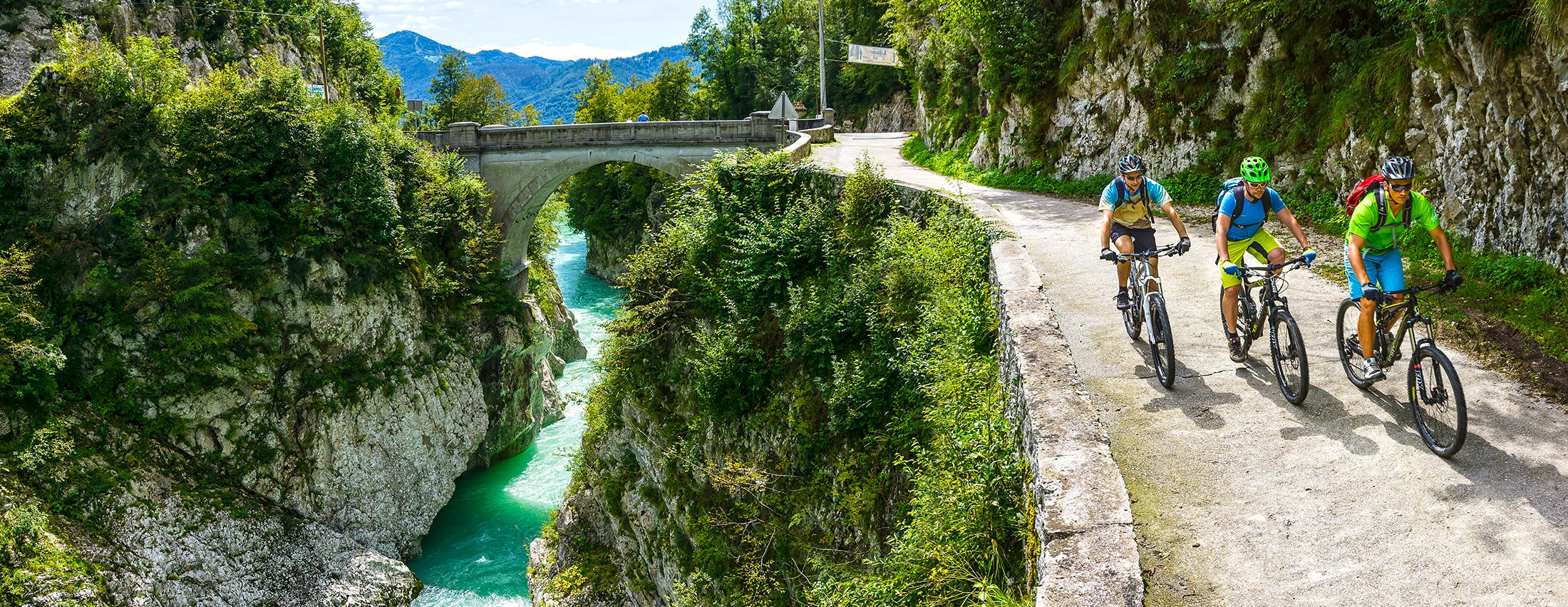
Photo by: Uroš Švigelj

Photo by: Žiga Koren



